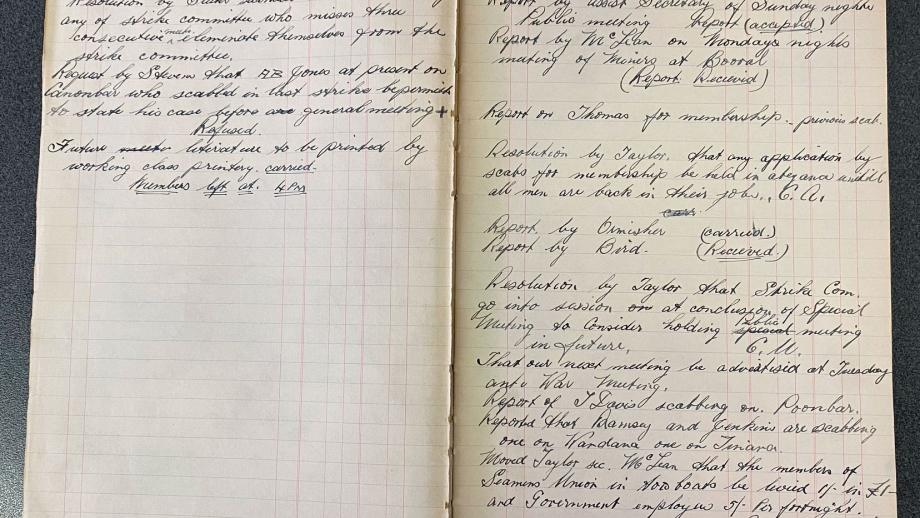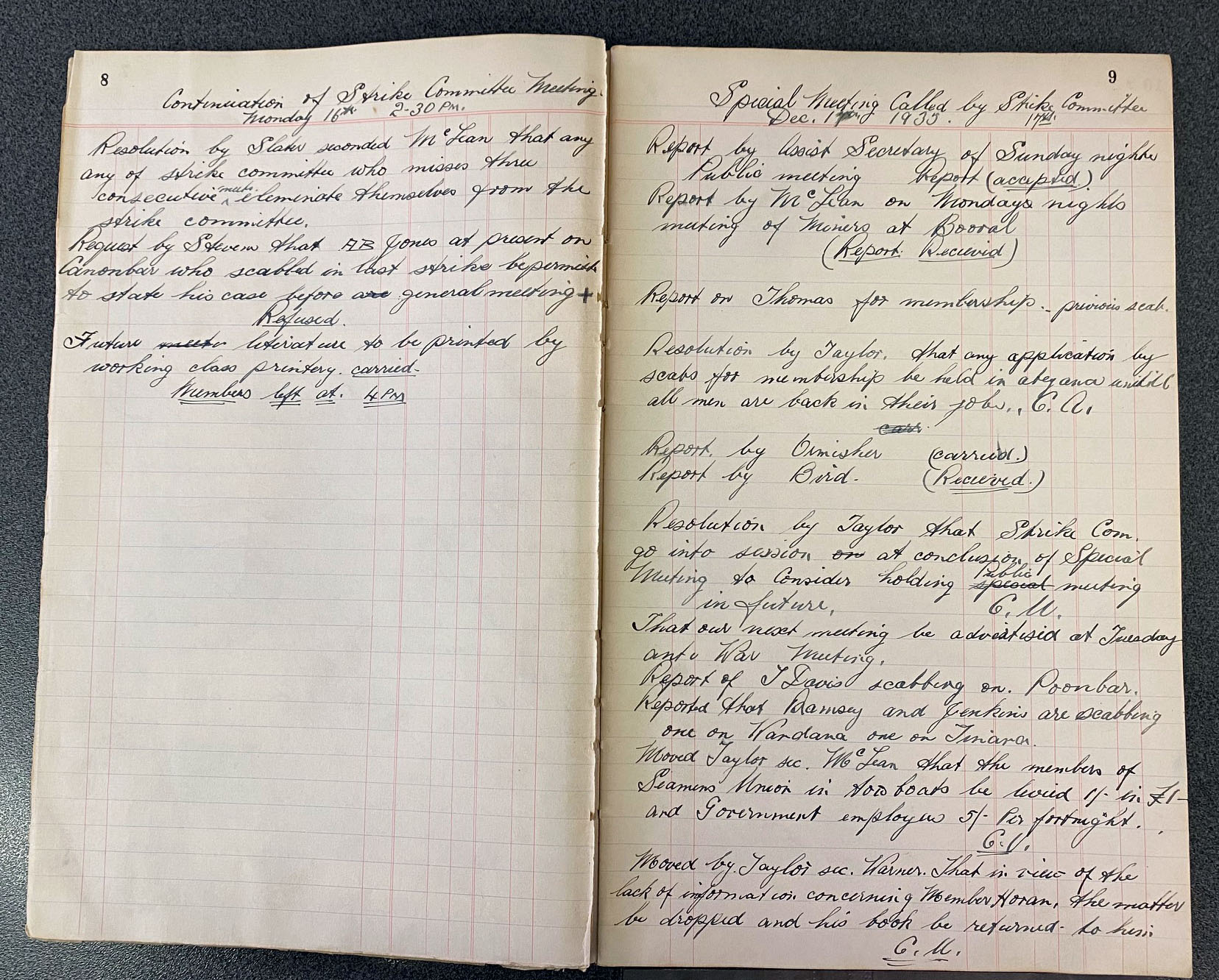The 1935-1936 Seamen's Strike
1935 was a year of turmoil within the Seamen's Union. Conflict between seamen and shipowners led to a strike that commenced in August that year. The strike was sparked by the refusal of shipowners to hire men who had previously been dismissed for requesting payment for deferred sailings. In response, many union members refused to man ships that would not hire these men. However, the union's position on the strike action was unclear and there was conflict amongst the leadership about whether to proceed with the strike. General Secretary Jacob Johnson and some other SUA officials opposed any extension of the dispute, but they found themselves outvoted by militant members of the Sydney Branch, including future General Secretary Joe Keenan, who established a Strike Committee. This resulted in a fracture in the SUA between Strike Committee members and Johnson and less militant members.
George Dethridge, Chief Judge of the Commonwealth Court of Conciliation and Arbitration, presided over a compulsory conference that saw Johnson and his supporters gain control over Keenan and the Strike Committee and convince members to negotiate for a settlement with shipowners. Officials were mindful that a hearing for a new seamen’s award was scheduled to be heard by Dethridge and there was a feeling that continuing with strike action could negatively impact the outcome. Unfortunately, the new award, handed down by Dethridge on 8 November 1935, was disastrous for seamen. The new award did increase basic rates, but it also cut overtime and nightwatchmen rates and abolished deferred sailing payments. Harsh clauses were also inserted into the award to deter strike action and medical examinations could now be used for discrimination (Louis 1981).
Unsurprisingly, seamen were outraged by the new award and at mass meetings held on 26 November 1935, members voted to reject the award and strike. As ships returned to home ports in early December, they sat idle and interstate shipping was crippled. The government delivered an ultimatum, threatening seamen with enforcement of the loathed Transport Workers’ Act, introduction of a licensing system, and granting of permits to overseas ships to operate more freely in Australia. Despite some support for seamen, particularly from the Miners’ Federation and Sydney Labor Council, the Australian Council of Trade Unions and representatives of 16 different federal unions recommended that seamen end their strike and apply for a variation of the award (Louis 1981).
Negotiations faltered and tensions rose within the SUA. With seamen refusing to return to work, the federal government applied the licensing provisions of the Transport Workers’ Act, although many seamen refused to take out these ‘Dog Collar’ licenses. There was a lack of support from other unions, with many also feeling the threat of the Transport Workers’ Act. Volunteers were easily found to replace strikers and little financial support was raised for strikers. At a fiery meeting on 27 December 1935, General Secretary Jacob Johnson was violently ejected and the leader of the Strike Committee, Joe Keenan, attempted to take over, although the Brisbane and Victorian Branch Secretaries refused to recognise him as leader. This situation left the SUA with no clear leader.
The dispute dragged on through 1936 and despite renewed support from ironworkers’ and miners’ unions, the SUA’s attempts to suspend licensing requirements failed. Shipowners were well supported by the government and by February that year, 93 of the 112 ships involved were being successfully operated by volunteer labour (Louis 1981). The SUA suffered a disastrous defeat. By association, so too did the Communist Party of Australia, who had been heavily involved in the Strike Committee. Joe Keenan was successful in securing the leadership, but was replaced in July 1937 by the more moderate, W.J. Daley. Daley was seen as “a competent man quite able to maintain discipline within the SUA” (Fitzpatrick & Cahill 1981, p. 109).
Daley filed Award amendment applications and the union gained increases to ordinary wages and overtime. The SUA also had to contend with a rival union. The Australian Seamen's Federation was largely comprised of members who had worked as ‘volunteers’ / ‘scabs’ during the 1935-36 dispute. Despite this, the SUA continued to rebuild and Brisbane became a stronghold, with this branch led by an increasingly popular leader who would soon stand for the position of General Secretary and go on to be the most effective leader in the union’s history, E.V. Elliott.
References
Fitzpatrick, B & Cahill, R 1981, The Seamen’s Union of Australia 1872-1972, Seamen’s Union of Australia, Sydney.
Louis, LJ 1981, ‘Recovery from the Depression and the Seamen’s Strike 1935-6’, Labour History, No. 41, <https://www.jstor.org/stable/27508492#metadata_info_tab_contents>















